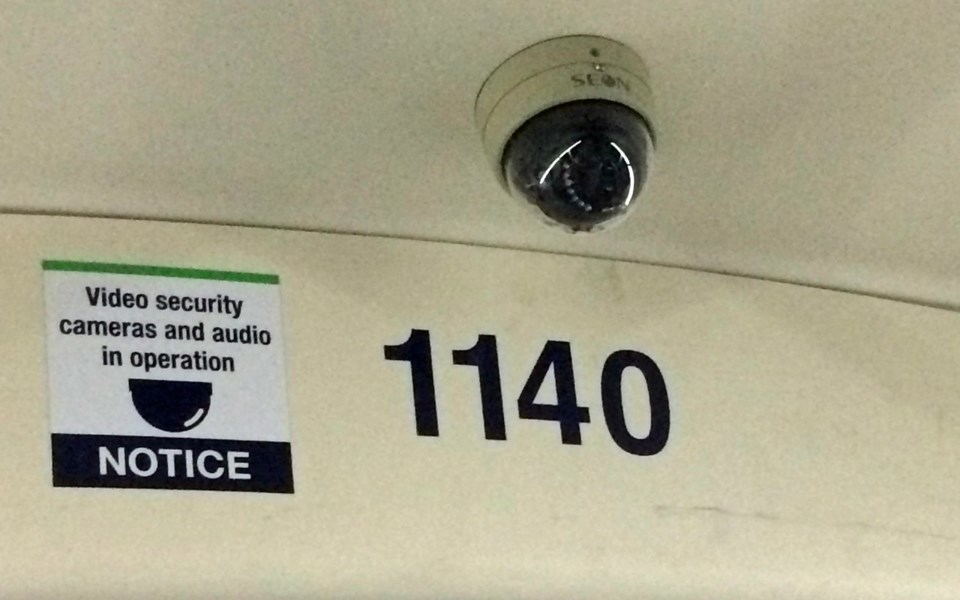Closed-circuit television cameras are improving security on Whistler's bus fleet and assisting police in investigations, according to a Unifor official.
BC Transit has installed the video monitoring systems on over 600 buses across the province.
Whistler's new compressed-natural-gas (CNG) buses, which fully replaced the old fleet in January 2018, came with CCTV systems factory-installed. Whistler is the sixth BC Transit community to have CCTV cameras.
Gavin Davies, a national representative for Unifor, the union representing Whistler drivers, said drivers have become accustomed to the cameras.
"The operators use them as a tool, to remind passengers that may be misbehaving that they are on camera," explained Davies.
There seems to be a "slight change of attitude" by the travelling public when they get on a bus with CCTV, said Davies. "They might be argumentative with something, but they soon let it go."
The cameras, he added, can also be used to exonerate drivers in the event of frivolous claims, or identify assailants.
There were three alleged physical assaults on Whistler drivers in 2018, including one serious attack that took place outside the front doors of a bus, said Davies.
"The driver was viciously assaulted, with his head bashed against the concrete," said Davies, adding that the RCMP is investigating.
According to Davies, Whistler drivers face unique challenges, including difficult weather, and the behaviour of some out enjoying Whistler's notorious party atmosphere. Thursday, Friday and Saturday nights can be wild rides, with passengers in a "festive" mood, he said.
Davies assessment of the usefulness of the cameras aligns with Jonathan Dyck, communications manager for BC Transit.
"We know, anecdotally, that if people see cameras on the buses, then they're less likely to do something inappropriate on the bus," Dyck said.
Since the CCTV pilot program began in 2015, BC Transit has used CCTV footage to support investigations 3,500 times on its buses across the province. This includes over 360 police investigations.
Speaking on privacy concerns, Dyck said it's important to note that the CCTV feed is not "live monitored."
"There is not someone sitting there and watching the cameras in real-time and seeing what's happening," he said.
If there is an incident on the bus, BC Transit has seven days to go back and "pull that footage."Otherwise, it is recorded over, he added.
"We recognize that privacy is a big thing for our riders and the public," Dyck said.
"We're working hard to try to balance privacy while also increasing safety on board our buses."
Footage from cameras aboard Whistler buses was requested 63 times in 2018.
The footage, explained Dyck, could have been requested for a host of purposes, from ICBC investigations into accidents to doing follow-ups on customer-service complaints. He did not have numbers on how many of them were RCMP-related.
CCTV is just one of a number of initiatives aimed at improving driver safety, Dyck added, explaining that that the transit service is also currently looking at installing driver doors as well.
That concept is being piloted in Abbotsford, Kelowna and Victoria, with five full driver doors being installed on buses at a cost of approximately $6,000 each.
"It's something that we know other transit agencies are looking at as well," he said.
"We're analyzing the data that came in and trying to determine what the next steps are."
Davies supports the driver-doors initiative, adding that it would improve safety for operators.
"It stops assaults, and it cuts off on spitting incidents," he said. "It just gives another level of security."
For more, visit bctransit.com.




